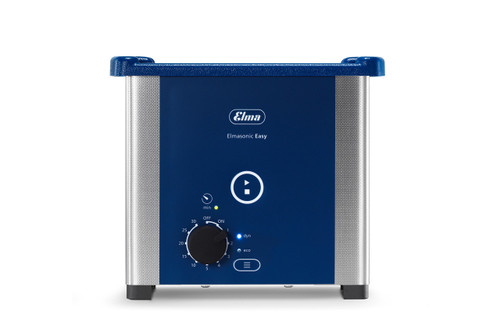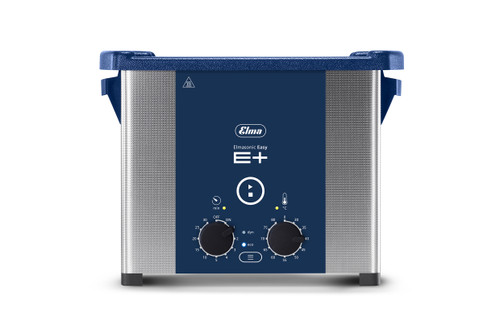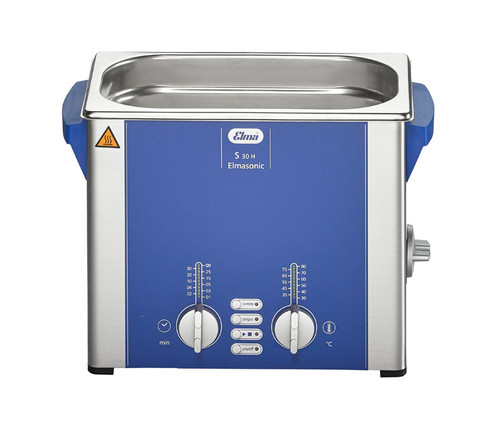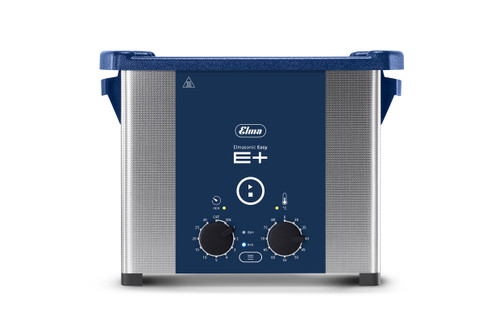Where and Why Ultrasonic Cleaners "Rule"
Ultrasonic cleaners are best known for providing fast, through and environmentally friendly removal of dirt and other contaminants from virtually any product that can be safely wetted in an aqueous cleaning solution.
A good example is safely removing flashing, mold release compound, burned-on plastic residues, and carbonization from plastic injection molds that can cost thousands of dollars. This replaces time-consuming manual scrubbing that can damage highly finished mold surfaces while missing contaminants in blind holes, cavities, cores and pins.
Removing old paint is greatly simplified in an ultrasonic cleaner, replacing smelly, sometimes flammable solvents applied with a brush followed by steel wool and wire brushing.
Fine mesh lab sieves can trap particles that contaminate future analyses. Manual screen cleaning using brushes can damage test sieves - a risk that is avoided with ultrasonic sieve cleaning equipment.
Costly smart phones can be damaged by dirt and moisture ingress. An ultrasonic cleaner replaces brushes, solvents and other mechanical methods that risk damaging delicate circuitry while missing tight spots in the devices' components.
An ultrasonic cleaner is proven far faster, safer and more effective than water sprays or manual scrubbing for removing 3-D printing mold support without risking damage to the printed part.
Carburetors will be around for a long time. An ultrasonic carburetor cleaning kit replaces manually cleaning disassembled carburetors by soaking in solvents, wash tanks, using brushes, aerosol sprays and other environmentally unfriendly methods.
Strongly adhering soot, carbon, ash, oily residues and other contaminants, especially within tightly confined spaces characterize cleaning challenges for DPF and EGR maintenance. An ultrasonic cleaner gives faster, more thorough results than using compressed air, fuel tank additives, aerosols, hot-water sprays and similar techniques.
In nondestructive testing aircraft engine components it is essential that all traces of dyes and particles are removed after the testing procedure. An ultrasonic cleaner is faster, more effective and less costly than vapor degreasing and other cleaning methods, and does not damage aircraft engine parts.
Hobbyists and businesses focusing on specific services can select from a variety of ultrasonic cleaner kits specifically designed to solve particular cleaning challenges.
Ultrasonic cleaners do more than clean. For example, ultrasonic energy employed in sonicator baths is often preferable to grinding or milling, techniques that can introduce heat that can degrade the samples. Sonicator baths also offer greater control over particle size, enhanced solubility of drugs, controlled crystallization, and production of nanomaterials.
A benchtop ultrasonic cleaner can be used in the home to process products such as liposomal vitamin C by encapsulating ascorbic acid within liposomes. Encapsulation improves the bioavailability of the vitamin C in your body.
How Ultrasonic Cleaners Rule
Unlike high-pressure water sprays used in wash tanks, aerosol sprays or manually scrubbing with a brush in a bucket of solvent, ultrasonic cleaners work by using the power of imploding (not exploding) microscopic bubbles in a process called cavitation.
The implosion of cavitation bubbles produces shock waves that blast loose and carry away contaminants, or act on samples being processed in sonicator baths.
For more information on how an ultrasonic cleaner rules, check out ultrasonic cleaners, an in-depth look.
















